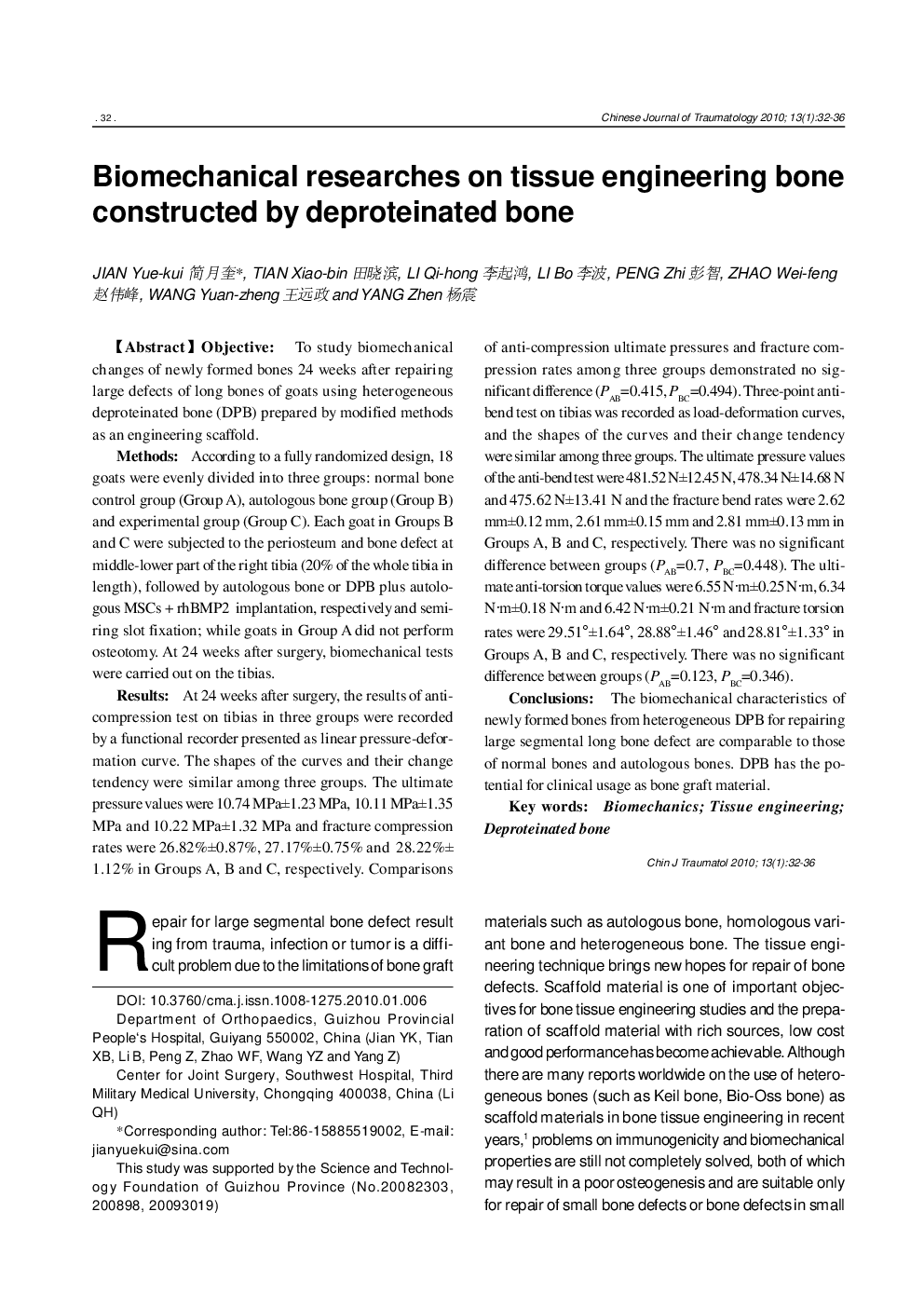| کد مقاله | کد نشریه | سال انتشار | مقاله انگلیسی | نسخه تمام متن |
|---|---|---|---|---|
| 3107690 | 1581783 | 2010 | 5 صفحه PDF | دانلود رایگان |

ObjectiveTo study biomechanical changes of newly formed bones 24 weeks after repairing large defects of long bones of goats using heterogeneous deproteinated bone (DPB) prepared by modified methods as an engineering scaffold.MethodsAccording to a fully randomized design, 18 goats were evenly divided into three groups: normal bone control group (Group A), autologous bone group (Group B) and experimental group (Group C). Each goat in Groups B and C were subjected to the periosteum and bone defect at middle-lower part of the right tibia (20% of the whole tibia in length), followed by autologous bone or DPB plus autologous MSCs + rhBMP2 implantation, respectively and semiring slot fixation; while goats in Group A did not perform osteotomy. At 24 weeks after surgery, biomechanical tests were carried out on the tibias.ResultsAt 24 weeks after surgery, the results of anticompression test on tibias in three groups were recorded by a functional recorder presented as linear pressure-deformation curve. The shapes of the curves and their change tendency were similar among three groups. The ultimate pressure values were 10.74 MPa±1.23 MPa, 10.11 MPa±1.35 MPa and 10.22 MPa±1.32 MPa and fracture compression rates were 26.82%±0.87%, 27.17%±0.75% and 28.22%±1.12% in Groups A, B and C, respectively. Comparisons of anti-compression ultimate pressures and fracture compression rates among three groups demonstrated no significant difference (PAB=0.415, PBC=0.494). Three-point anti-bend test on tibias was recorded as load-deformation curves, and the shapes of the curves and their change tendency were similar among three groups. The ultimate pressure values of the anti-bend test were 481.52 N±12.45 N, 478.34 N±14.68 N and 475.62 N±13.41 N and the fracture bend rates were 2.62 mm±0.12 mm, 2.61 mm±0.15 mm and 2.81 mm±0.13 mm in Groups A, B and C, respectively. There was no significant difference between groups (PAB=0.7, PBC=0.448). The ultimate anti-torsion torque values were 6.55 N·m±0.25 N·m, 6.34 N·m±0.18 N·m and 6.42 N·m±0.21 N·m and fracture torsion rates were 29.51°±1.64°, 28.88°±1.46° and 28.81°±1.33° in Groups A, B and C, respectively. There was no significant difference between groups (PAB=0.123, PBC=0.346).ConclusionsThe biomechanical characteristics of newly formed bones from heterogeneous DPB for repairing large segmental long bone defect are comparable to those of normal bones and autologous bones. DPB has the potential for clinical usage as bone graft material.
Journal: Chinese Journal of Traumatology (English Edition) - Volume 13, Issue 1, February 2010, Pages 32-36